What to Look for in an Overseas Warehouse Provider
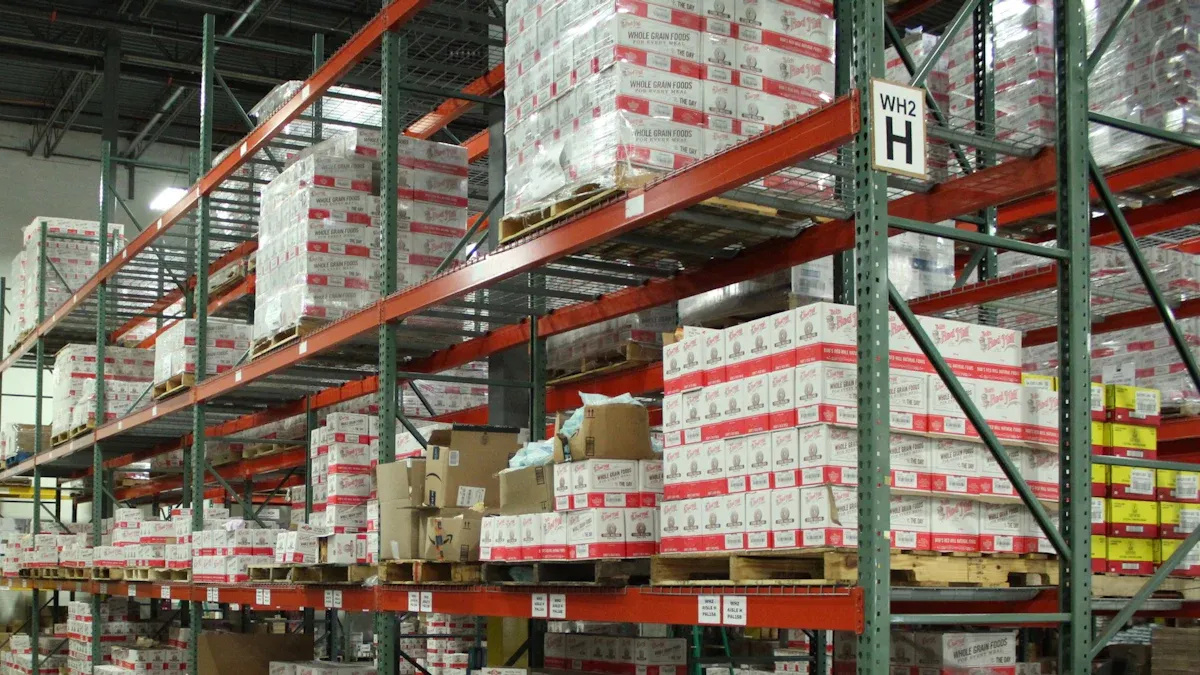
When selecting an overseas warehouse for your business, it’s essential to consider key factors such as location, cost, technology, compliance, scalability, and service. Many companies now opt for an overseas warehouse to accelerate operations, reduce expenses, and keep pace with rapid e-commerce growth. Finding a warehouse provider that aligns with your business needs and offers flexible, technology-driven solutions is crucial. Choosing the right overseas warehouse helps you maintain a competitive edge in global trade.
Key Takeaways
Pick a warehouse near your customers and trade centers. This helps deliver faster, lowers shipping costs, and makes your supply chain better. - Find clear prices and extra services like real-time tracking and customs help. These save time and stop expensive errors. - Choose a provider with good technology, follows rules, and has flexible space. This helps your business grow and keeps your products safe.
Location Matters
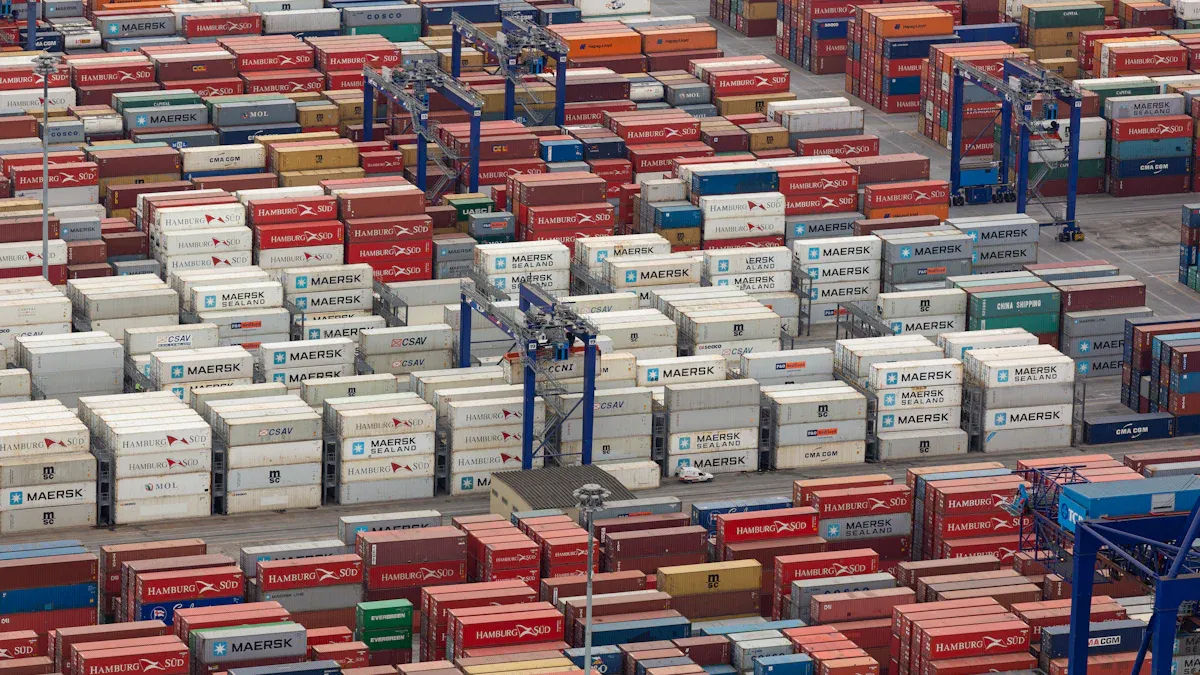
Proximity to Customers
Picking a good warehouse spot is very important. If your warehouse is close to your customers, you can send products faster. This means your lead time gets shorter. People want their orders quickly. When goods are stored near them, shipping is faster and costs less. You also avoid late deliveries that can hurt your business. The right spot lets you react fast to market changes and busy seasons. You can restock quickly and keep items on the shelves. This helps with supply chain management. A warehouse near buyers makes your supply chain work better and keeps customers happy.
Access to Trade Hubs
Let’s talk about trade hubs now. Choosing a spot near ports, airports, or highways is a big plus. These places help you move goods in and out easily. Lead time gets shorter. You get through customs faster and transport is smoother. The bonded warehouse market shows these spots are very popular. They help with customs duties and make distribution faster. Here’s a table showing how location affects your business:
Metric | Impact Range | Explanation |
|---|---|---|
Total logistics cost reduction | Optimized warehouse location near ports and gateways | |
Transportation cost savings | 15-25% | Efficient positioning close to international transport hubs |
Inventory investment reduction | 10-20% | Improved inventory deployment lowers capital tied up in stock |
Average delivery time reduction | 15-40% | Faster delivery enabled by proximity to customers and transport infrastructure |
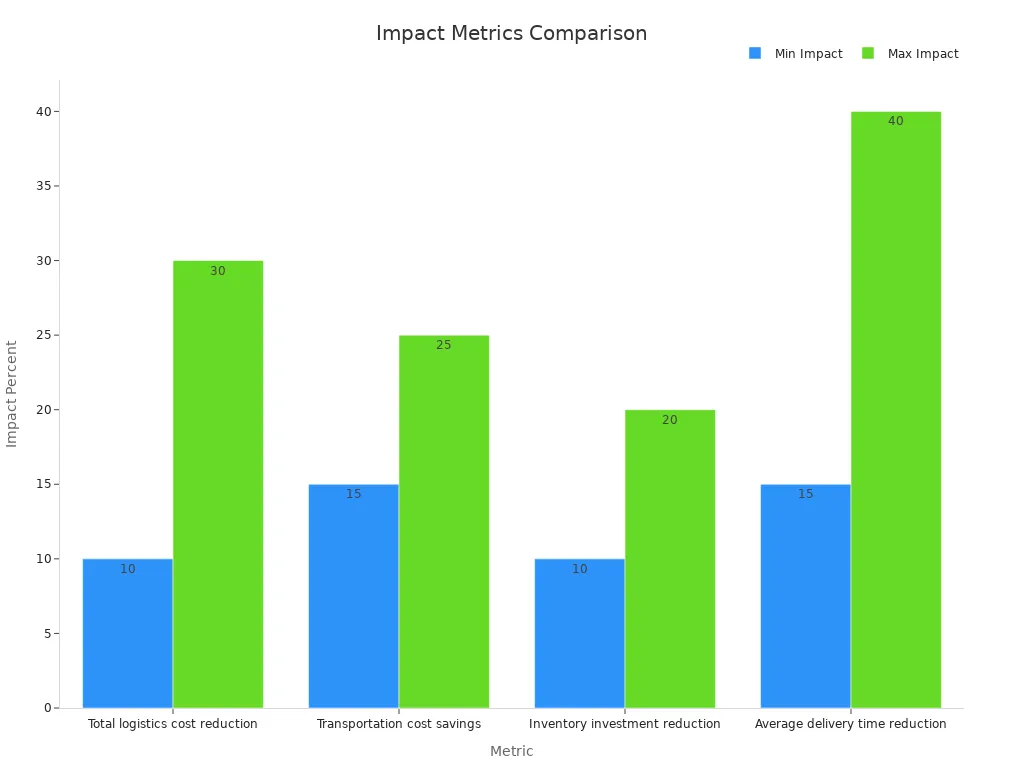
A warehouse near trade hubs helps your supply chain and keeps you ahead in global business.
Cost and Transparency
Fee Structure
When you look for an overseas warehouse, you want to know exactly what you will pay. Different providers use different fee structures. Some charge by pallet, some by cubic foot, and others by square foot or bin. These fees can change every year. Take a look at this table to see how storage fees have changed over time:
Fee Type | 2017 | 2018-2019 | 2020 | 2021 | 2022 | 2023 | 2024 | 2025 |
|---|---|---|---|---|---|---|---|---|
Storage Fee per Pallet (Monthly) | $13.02 | $13.20 | $14.58 | $14.79 | $16.21 | $18.30 | $20.37 | $20.17 |
Storage Fee per Cubic Foot (Monthly) | $0.54 | $0.50 | $0.45 | $0.45 | $0.50 | $0.55 | $0.55 | $0.46 |
Storage Fee per Square Foot (Monthly) | $0.88 | $0.66 | $0.77 | $0.75 | $0.91 | $1.15 | $1.22 | $1.73 |
Storage Fee per Bin (Monthly) | $2.14 | $2.85 | $3.30 | $4.07 | $3.18 | $3.20 | $2.67 | $3.08 |
You can see that storage fees have gone up, especially for pallets and square feet. This makes it important to compare cost and space requirements before you choose a provider. Some warehouses also charge for returns, long-term storage, and shipping markups. Always ask for a full list of fees so you can plan your end-to-end costs.
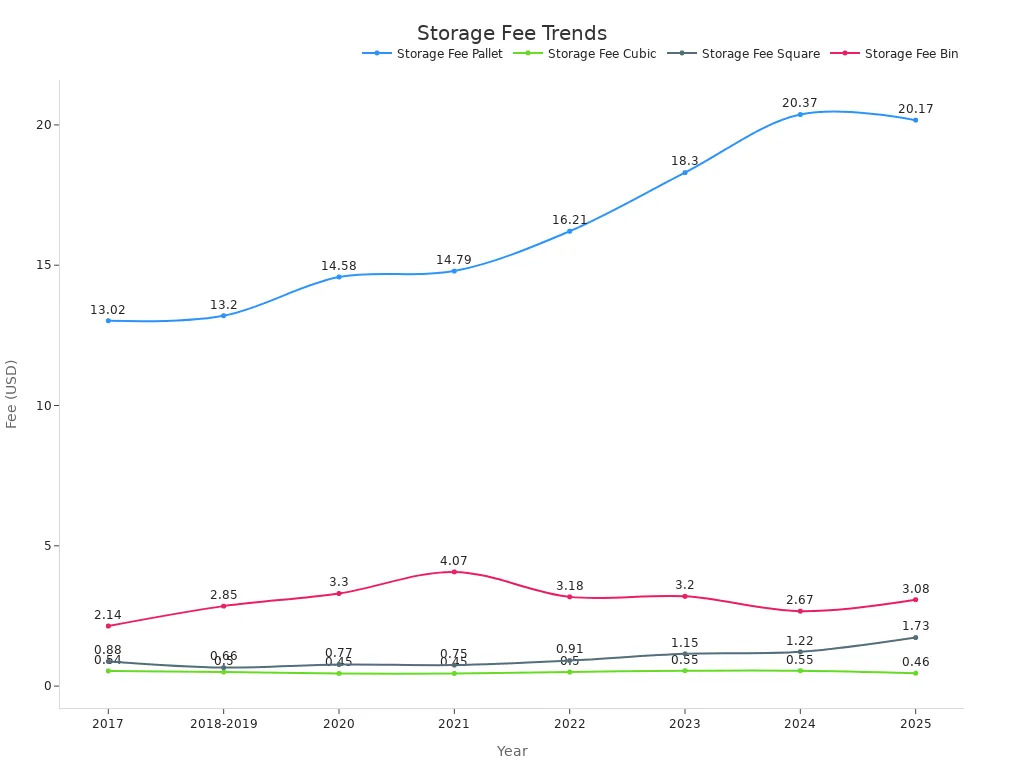
Value for Service
Price is important, but you also want value. A good warehouse provider gives you more than just space. You get real-time tracking, fast order processing, and help with customs. Some providers, like JUSDA, use smart systems to keep your inventory visible and safe. When you compare cost and space requirements, think about what you get for your money. A provider that helps you save time and avoid mistakes can be worth a little extra. Look for clear pricing and strong support. This way, you know you are getting the best value for your business.
Facility Capabilities
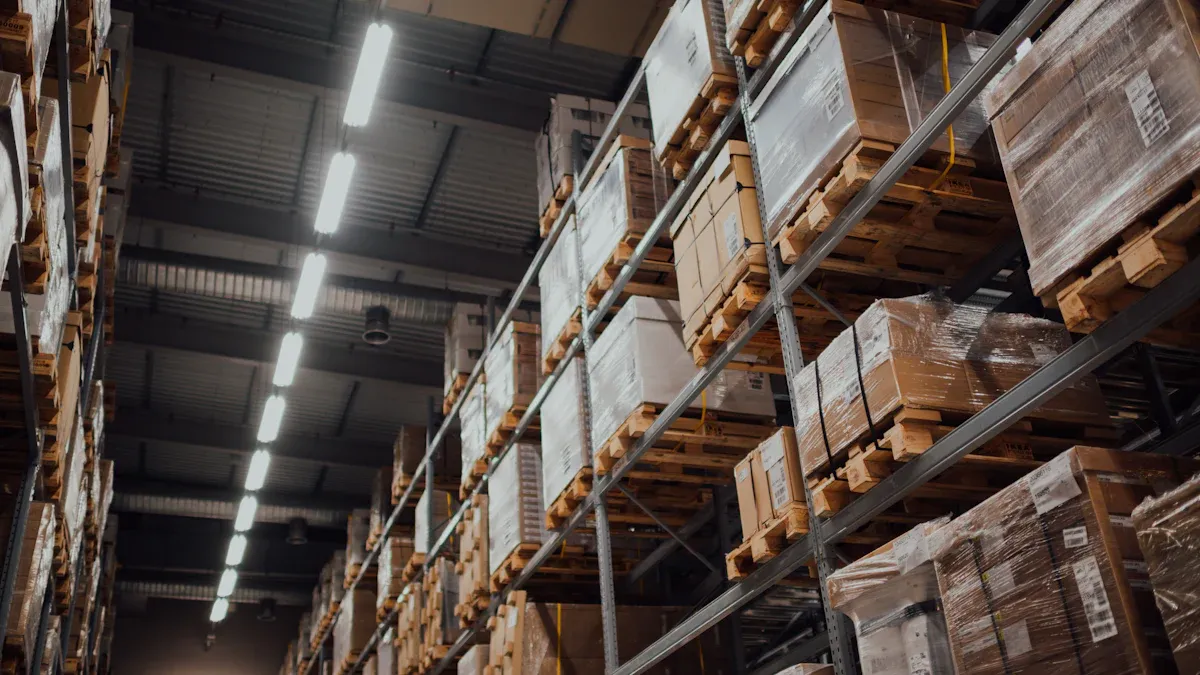
Storage Options
When you check warehouse features, see if the space fits your needs. Some warehouses use block stacking for large, simple inventories. Others have racking systems to use tall space and keep things neat. In 2022, warehouses used about 85.6% of their space. This means most space is used, but there is still room to move safely. If racks are too full, workers slow down. If there is too much empty space, money is wasted. The best warehouses use smart layouts and racks that can change.
You can also look at some important numbers to see how well a warehouse works:
Receiving efficiency—how quickly workers check in new goods.
Put-away cycle time—how fast items go from the dock to storage.
Inventory accuracy—how close records are to what is on shelves.
Inventory turnover—how quickly products move in and out.
Order picking accuracy—how often workers pick the right items.
These numbers show if a warehouse can meet your needs and keep your business running well.
Value-Added Services
Great warehouses do more than just store your products. They offer extra services like picking, packing, labeling, and after-sales help. These extras help with order fulfilment. When a warehouse helps with returns or special packaging, customers feel cared for. Studies show after-sales service and special work make customers loyal and bring them back. In busy markets, these services help you stand out from others.
Tip: Ask your provider which value-added services they have. The right mix can make your warehouse better and help you keep customers for a long time.
Technology in Overseas Warehouse
Real-Time Tracking
It is important to always know where your products are. Real-time tracking lets you see this right away. Advanced warehouse management systems help you watch your inventory at every step. JUSDA uses tools like Juslink and eVMI for instant updates. These updates help you find problems quickly and fix them before they get worse. You can check if your inventory is correct, how fast orders are filled, and how well the warehouse works, all from your dashboard. These systems keep track of things like:
Inventory accuracy
Order processing time
On Time, In Full (OTIF) delivery
Warehouse capacity utilization
Real-time tracking helps you work faster and make fewer mistakes. You also get better control over your supply chain management. This means you can deliver faster and keep customers happy.
Note: Real-time tracking helps you find slow spots, make better routes, and even save on labor costs. You can do more work with less effort.
System Integration
System integration links all your tools and software together. When your warehouse management systems connect with your ERP and other platforms, you can see everything in one place. JUSDA’s technology connects all parts, so you can handle inventory, orders, and shipping from one system. This makes your international warehouse work better.
A big online bookstore used robots with their warehouse management systems. This made putting items away 800% faster. They also filled orders quicker and made fewer mistakes. When your systems work together, you have more control and better efficiency. You can find problems, fix them fast, and keep your supply chain management strong.
Tip: Pick a provider that offers easy system integration. This will help you make your supply chain work better and stay ahead in global business.
Compliance and Security
Regulatory Standards
You need your overseas warehouse provider to follow important rules. This keeps your business safe from problems. Most companies think following rules is very important now. About 83% of risk and compliance workers say rules help make good choices. You should pick providers with certifications like ISO 27001, SOC 2, or C-TPAT. These show the warehouse cares about security and privacy.
Many leaders use smart ways to follow rules. They do not just check boxes. They try to lower risks and help the business grow. Almost 70% of service groups must follow at least six rules about information security and data privacy. If you choose a provider with strong compliance, you protect your business and your customers.
Tip: Ask your provider about their certifications and how they keep up with new rules.
Inventory Protection
It is very important to keep your products safe. Cargo theft and tampering have gone up by 27% in the last year. This happens more during busy times like Thanksgiving and Christmas. Thieves often steal electronics, luxury goods, and medicine. You need a warehouse that uses strong security.
Here are some ways top warehouses keep your inventory safe:
Security guards and trained staff watch for trouble.
Fences and locked rooms keep out strangers.
Real-time tracking with RFID and Warehouse Management Systems shows where your goods are.
CCTV cameras record everything for safety.
Regular audits and staff training stop mistakes and theft.
Cybersecurity steps like data encryption and multi-factor login protect your information.
These steps help lower losses and keep your inventory management working well. When your warehouse uses these tools, you avoid big losses and keep your customers happy.
Scalability with the Right Warehouse Provider
Growth Support
If your business gets bigger, your warehouse should grow too. The right provider gives you more space when you need it. You do not have to sign long contracts. You can get more space in busy times. You can use less space when things slow down. This helps you save money and work better. Many top providers let you share space with other companies. You only pay for what you use. You also share rent, workers, and technology. This makes it easier to plan your spending.
Here is what a growth-focused provider gives you:
More space when you are busy, less when you are not.
Tools like AI, GPS, and smart tracking help you work faster.
You pay only for what you use, so no big bills at once.
A team that knows how to handle quick changes.
Did you know most businesses trust third-party logistics providers? Over 83% of all businesses and 90% of Fortune 500 companies use them. Warehousing is growing fast. Most business leaders want to grow to meet new demand.
Flexible Solutions
Your business needs can change at any time. That is why you need flexibility. The right warehouse provider lets you change your plan fast. You can add more storage or use less space quickly. Providers use modular systems and automation to help you fill more orders.
Here is how flexibility helps you:
Change storage for busy or slow times.
Use real-time tracking to watch your inventory and shipments.
Keep products closer to customers for faster shipping.
Sign contracts that let you change your plan when needed.
Use data to plan for busy seasons and avoid problems.
Tip: Pick a provider with both scalability and flexibility. This helps your business grow and keeps you from running out of space.
Service and Reputation
Customer Support
You want a warehouse provider who cares about you. Good customer support means you get help fast. Problems are fixed before they get worse. When you talk to your provider, see how they answer your questions. Do they reply quickly? Do they solve problems right away? These things help keep customers happy.
You can check customer support by looking at some numbers. Here are a few important ones:
Receiving accuracy
Picking accuracy
Perfect order rate
Labor productivity
These numbers show if the warehouse does a good job. High numbers mean you get your orders on time. You also get the right items without mistakes. This makes your customers happy and helps your business. When your provider works fast and well, you save time and keep customers coming back.
Tip: Ask your provider about their support team. Also ask how they check these numbers. Good support helps your business run better.
Proven Success
You should pick a warehouse provider with a good history. Proven success means they have helped other companies do better. For example, JUSDA worked with Sharp to fix supply chain problems. After working together, Sharp saved 20% on logistics costs. They also delivered orders 30% faster. Customers were happier because orders came quicker and with fewer mistakes.
Other top providers also have good results. Some companies had 40% fewer delays after using better technology. Others made customers 30% happier by planning better or working with smart partners. These stories show that the right warehouse provider can help your business grow and work better.
When you pick a provider with real results, you know they can help your business be more efficient and keep customers happy.
Choosing a Warehouse for Your Industry
Industry-Specific Needs
Every industry needs different things from a warehouse. You might sell electronics, food, clothes, or auto parts. Each type of product needs special care. Some items need to stay cold or cool. Others need strong locks or special boxes. If you sell alcohol, the warehouse must know the age laws. They also need the right licenses. Auto parts need careful packing and shipping. Even if your products do not have strict rules, you want a provider who knows your business. This helps you avoid mistakes.
Here are some things to check:
Warehouses should set up their space for your type of work, like making or sending out products.
Storage changes if your goods can spoil, are dry, or are wet.
You may need forklifts or conveyor belts for your products.
Safety and legal rules are not the same for every industry.
Good waste management and green practices can help your brand.
Tip: Ask your provider if they have worked with your industry before. The right provider helps you meet all rules and keeps your products safe.
Custom Solutions
You want a warehouse that does more than just hold your stuff. Custom solutions help your business work better. A good provider uses warehouse management systems that fit your needs. These systems track lots, serial numbers, and expiration dates. They also help with cross-docking, order picking, and inventory control. Using custom software saves time and money. You also make fewer mistakes.
Custom solutions do boring jobs for you and link your systems.
Real-time data lets you see problems and fix them fast.
You get better service because orders ship on time.
Custom setups help you follow rules and avoid fines.
Picking a warehouse with custom solutions means you get a partner who understands your needs and helps you grow. You can focus on your business while your provider takes care of the details.

JUSDA Solutions
To provide you with professional solutions and quotations.
When you think about overseas warehouse choices, look at important things like location, cost, and what the building has. Here is a table that shows what is most important:
Why It Matters | |
|---|---|
Location | Faster delivery, better access |
Cost | Saves money, boosts satisfaction |
Facilities | Improves efficiency, keeps goods safe |
Macro-environment | Follows rules, supports investment |
Cooling Facilities | Expands your customer base |
Picking the best warehouse means finding one that matches what you need. Use these ideas as a checklist when you pick an international warehouse. If you want your business to run better, talk to a provider like JUSDA for custom international warehouse help.
See Also
Discover How JUSDA's Warehousing Facilities Improve Efficiency
The Importance Of Automation In Modern Warehouse Operations
How Robotic Automation Enhances Warehouse Efficiency Today
Comprehensive Insights Into Leading Global Logistics Providers
How Robotics Technology Drives Higher Productivity In Warehouses
